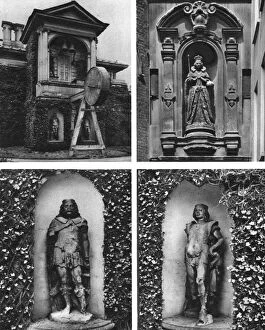St Dunstan In The West Collection
"St Dunstan in the West: A Glimpse into London's Rich History" Step back in time and explore the captivating story of St Dunstan in the West
All Professionally Made to Order for Quick Shipping
"St Dunstan in the West: A Glimpse into London's Rich History" Step back in time and explore the captivating story of St Dunstan in the West, a church that has witnessed centuries of change and transformation. From its humble beginnings to its eventual demolition, this iconic landmark holds a special place in London's history. Dating back to at least the 11th century, St Dunstan in the West stood proudly on Fleet Street, once known as one of London's busiest thoroughfares. The South-east Prospect engraving from 1756 showcases its stunning architecture against a bustling city backdrop. Temple Bar and St. Dunstans Church painting from c1750 offers a glimpse into what life was like during that era – horse-drawn carriages passing by while worshippers entered this sacred space for solace and prayer. The church played an essential role in Izaak Walton's life, serving as his parish church during his lifetime. This connection is beautifully captured in the c1935 photograph titled "St. Dunstans Fleet Street, Izaak Waltons Parish Church. " In 1814, Old St. Dunstans Church stood tall until it met an unknown fate later documented through an intriguing image created around 1897. One cannot forget about St. Dunstans Clock - an intricate masterpiece erected in 1897 but sadly lost to time today. Its presence added charm and character to Fleet Street for many years. Fleet Street itself is immortalized through various artworks such as "Fleet Street from St Dunstan in the West to Temple Bar" (1802) which depicts bustling activity along this historic street. However, progress often comes at a cost; thus came the inevitable demolition of the Church around 1830 – forever altering this cherished part of London's skyline.




















